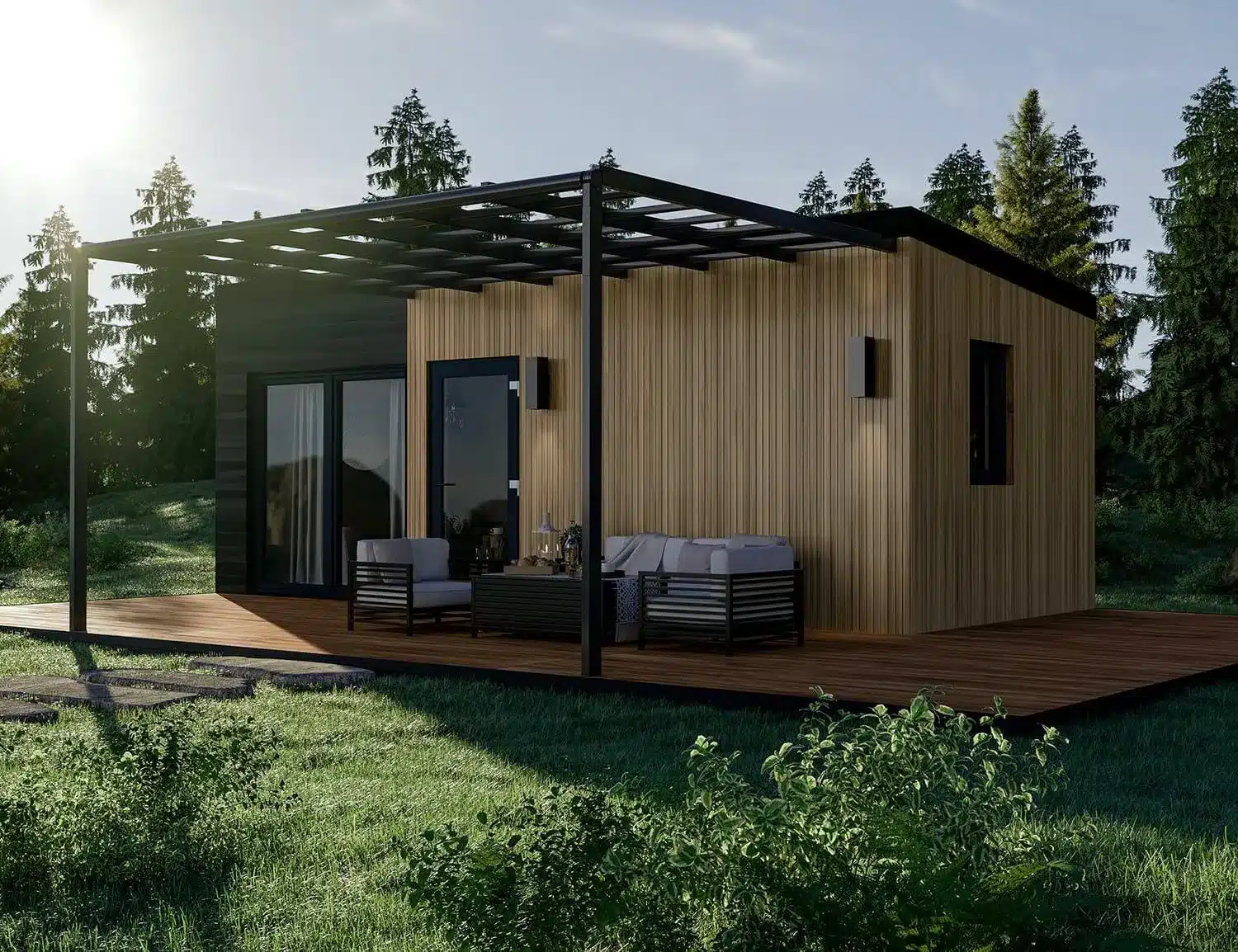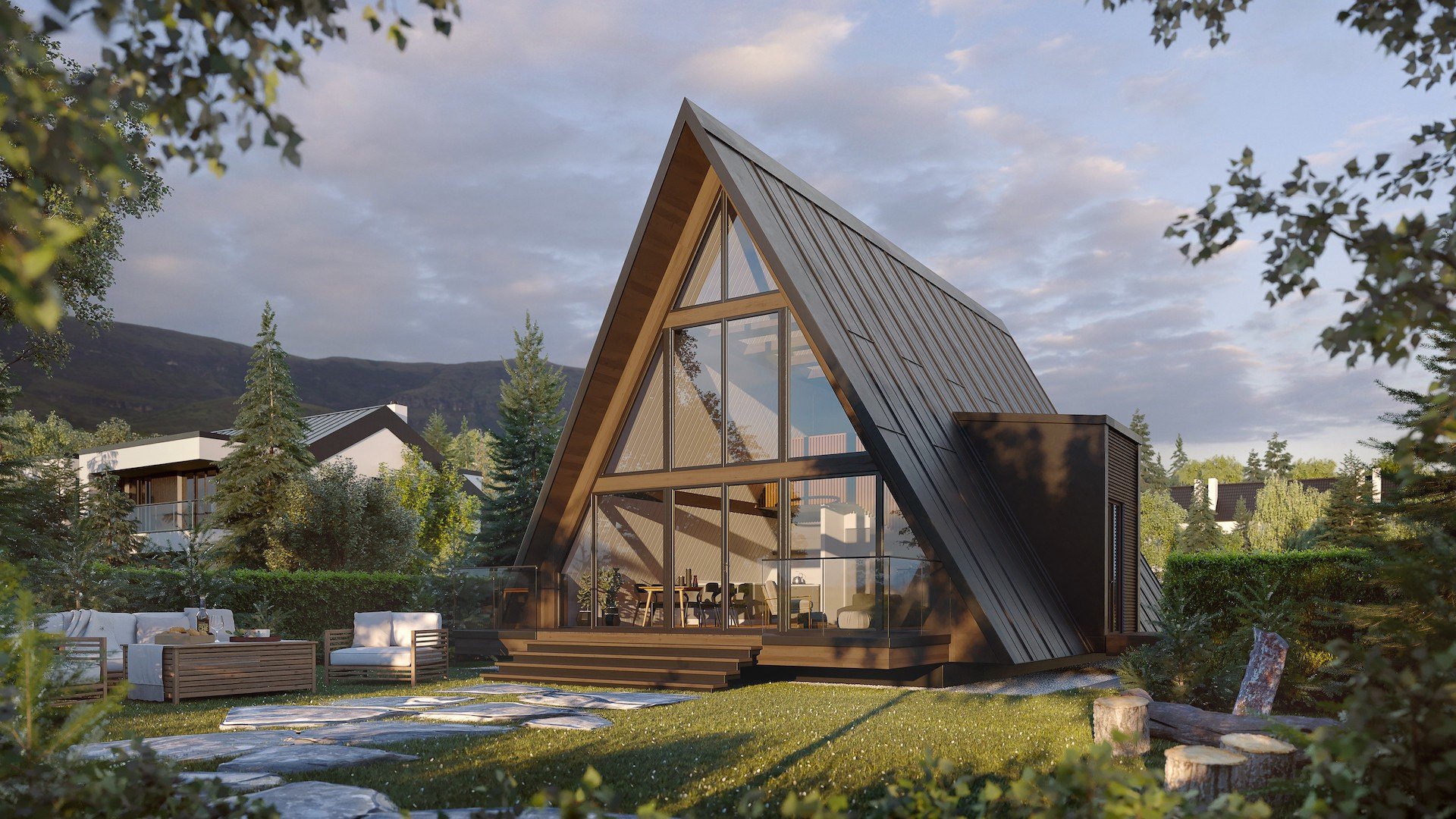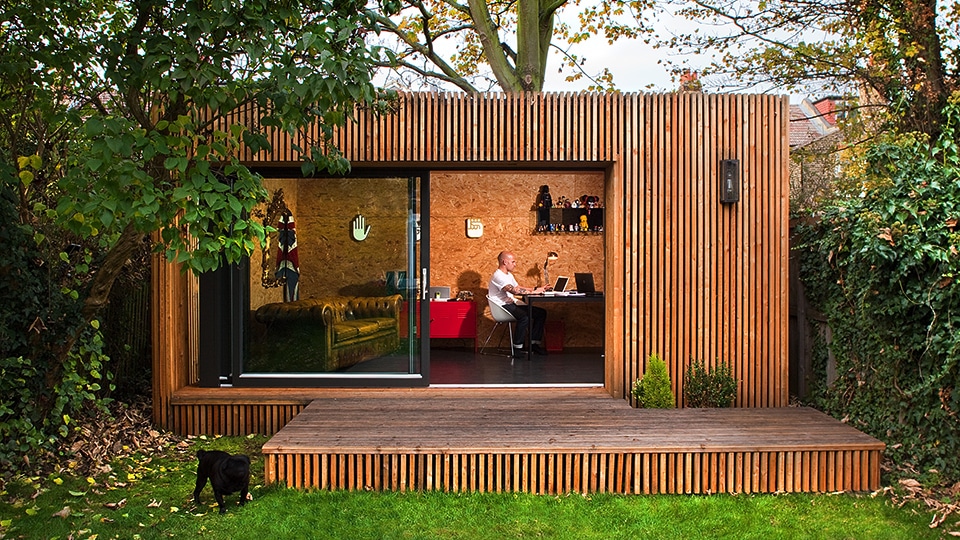Prefabricated houses lend themselves to sustainable building because they are manufactured in a controlled environment, using optimal material quantities, whilst building to a robust high standard for long house life. In a factory, the operatives are protected from the weather and potentially use precision equipment and templates that wouldn’t be practicable on a construction site. They hopefully work in good light conditions with controlled ventilation. There is a reduced need to work at height, making it easier to achieve accuracy whilst assembling timbers and other materials into transportable sections.
Prefabs are assembled on-site in a matter of days or weeks, reducing traffic and noise on site and en route to the site, thereby reducing disturbance and danger to wildlife. Transporting workers to a construction site is usually more carbon intensive than to a factory as most workers will live close to a long-term factory job, also increasing the chances of them cycling or using public transport to get to work as they don’t need to carry tools around with them between sites.
Foundations are typically lighter for a prefab house, and the weight of the house is known more accurately than a house constructed on-site. Typically prefab houses are more structurally sound to be transported to the site without incurring any damage. Prefab houses made of timber will be lighter than site-built timber houses as they are carefully calculated and precision built in the factory to minimise load for transportation.

How to choose a more eco-friendly prefab house.
Simple lifecycle analysis
Lifecycle analysis is a way of assessing the flows of material and energy during a product’s lifecycle, in this case, a house. It is sometimes abbreviated to LCA, and you might have heard other related terms, including cradle-to-grave assessment, meaning from when the constituent materials are extracted at the source through to the disposal of the product.
There are many LCA methodologies, but the concept is always to explore how a product affects the world around it and how we can modify variables to have more of the desired effect and less of the undesired. For sustainability, we aim to assess how the product or project can avoid harming people or the natural world whilst optimising the positive outcomes such as suitable employment, enhancing natural habitat or absorbing carbon.
Start with simple LCA to help you to inform your decisions and compare different prefab houses and manufacturers. To do this, make a list on paper or a spreadsheet, or draw a circle and divide it into three segments.
- In the first segment, list what you know about the materials you will use for the foundations, structure and internal decoration, where they come from and what you know about their environmental impact. List the people and the processes that will bring these materials together to form your house.
- In the second segment, list what you know about the required maintenance and how often you plan to replace the kitchen or redecorate.
- In the third segment, write what you know about the disposal of the house and how that will take place. You can estimate how long the house will stand for. However, even if you have to know the idea, you can still note that metal can be easily separated and recycled, vinyl flooring and Rockwool insulation will likely go to a landfill, and your oak timber beams may be sold on and sanded for use in another house.
You can add as much detail as you like regarding processes, transport fuel, energy use, the packaging of materials, and using data from manufacturers and academic institutions. Still, the basic concept is to be more aware of your options and their implications. You can do LCA with lots of numbers and data or only a rough sketch with words. Do the exercise on paper with your partner, family or project partners to reflect, research and explore your options together.
LCA applied to prefabs.
It’s much easier to do LCA for a prefab than a regular build. A Quantity Surveyor might provide a long list of materials and estimations for a regular house build, which may be hard to engage with even if meticulously accurate to how the build will be carried out.
Prefabricated houses are produced and sold as a single product in a controlled factory environment. Therefore, most manufacturers have accurate calculations for their business Calculations on the number of materials, the energy the factory will use, and the transport required to get the house from the factory to the site.
You would also need to add your analysis of the foundation materials and process and anything beyond the prefab product, such as a bare house shell or a fully fitted turnkey solution. Some turnkey houses, whether prefab or not, will provide LCA in their brochures or figures for the carbon emissions in construction, including the foundations.
Whilst LCA can be used to assess a product’s overall environmental and even social impact. It is more typically used to evaluate carbon emissions only. Carbon emissions are like a currency in that they are so related to the calculation of climate change and government and companies’ obligations that they are traded through global carbon markets.
For this reason, a lot of research goes into assigning carbon values to materials and processes, which then becomes accessible to house buyers, for example, via appliance data sheets in line with legislation on product labelling, or prefab house manufacturer highlighting their eco-credentials to potential customers.
Other aspects of environmental impact in prefab houses.
Although carbon emissions calculations are a good indicator of the effect of our house build on climate change, they don’t tell the whole story of our impact on the environment. We’d be missing opportunities to improve our home if we failed to consider other aspects of environmental assessment.
When every prefab house manufacturer claims their product has superior ecological credentials, it can be hard to know who we should go with. There are some sources of impartial data for different materials, but we can also use some basic principles and instincts. Here are some key points to consider:
Look for or ask to see manufacturers certifications and awards.
Look out for sustainability and ethical practices certifications. Suppose a prefab manufacturer puts a lot of effort into communicating about sustainability. In that case, we’ll get a feel for that, and it’s reasonable to assume that sustainability is a part of their business strategy and hopefully the core values of their leadership team and reflected in their recruitment and training practices.
Consider natural less-processed materials.
Natural materials are generally more sustainable as they require less energy or harmful chemicals to process. Anything that contains oil, such as most plastics and vinyl, involves energy-intensive industrial processes, often involving considerable scale destruction of natural habitat and the bringing up carbon safely locked away under the surface.
A timber prefab house is almost certainly more sustainable than a concrete prefab, even if the concrete is made using recycled aggregate, as recycling heavy materials is still energy intensive.
Ask the manufacturer where and how they source their materials.
Ask where the prefab manufacturer sources their materials from. This adds an essential assurance that timbers are sourced ethically, or at least shows that the manufacturer knows the importance of sustainable material sourcing. They should be able to tell you where they get all of their materials from, and many standard materials, such as cement and plastics, now have supply options that include more recycled content.
Get a feel for the companies ethics and working practices by visiting their factory.
Visit the factory if you can. Even if it involves a short holiday, that’s a small cost when making decisions about your 200,000+ Euro house. By visiting the factory, you will get some idea of how the company engages with sustainable practices in general- do they have cycle lanes and parking, and do they have solar panels on the roof? You’ll be able to see whether their factory is n and well-organised place, how they use offcuts and wood waste to improve sustainability, and whether their employees seem happy and motivated to innovate and build high quality.
Do your LCA exercise for two or three manufacturers to compare them.
Once you’ve made your LCA for one manufacturer, whether it’s a doodle with words on paper, or a spreadsheet with reams of data, it’ll then be much easier to repeat the process. Do the same for a few other prefab manufacturers so you can map the environmental impact of different prefabs against your environmental priorities. This process will help to inform the sustainability angle of your critical decisions, along with other inputs such as budget, timescales and aesthetic preferences. A powerful tool in your box.
Do you have a question about LCA? Would you like to share your LCA drawing or spreadsheet with other homebuilders? Have you tried LCA software such as LCA online?




